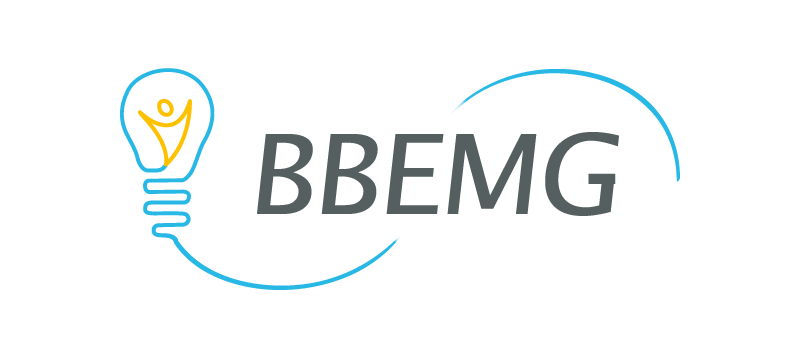Exposure assessment and cytogenetic biomonitoring study of workers occupationally exposed to extremely low-frequency magnetic fields (H. Nguyen, G. Vandewalle, B. Mertens, J-F. Collard, M. Hinsenkamp, L. Verschaeve, V. Feipel, I. Magne, M. Souques, V. Beauvois, M. Ledent). Bioelectromagnetics, 2024, Vol. 45, Issue 6, 260-280.
>> Abstract in PubMed
Maes A, Verschaeve L. (2016)
Genetic damage in humans exposed to extremely low-frequency electromagnetic fields. Arch Toxicol., 90(10):2337-2348.
>> Abstract in PubMed or in our literature reviews
Verschaeve L., Wambacq S., Anthonissen R., Maes A. (2016)
Co-exposure of ELF-magnetic fields and chemical mutagens: An investigation of genotoxicity with the SOS-based VITOTOX test in Salmonella typhimurium. Mutat Res Genet Toxicol Environ Mutagen. 2016 Jan 1;795:31-5. doi: 10.1016/j.mrgentox.2015.11.003. Epub 2015 Nov 12.
>> Abstract in PubMed
Vanderstraeten J., Burda H., Verschaeve L., De Brouwer C. (2015)
Health effects of ELF magnetic fields: considering static and medium frequency fields in studies of the cryptochrome hypothesis. Health Physics, 109, 84-89.
>> Abstract in PubMed
Vanderstraeten J., Verschaeve L., Burda H., Bouland C., de Brouwer C. (2012)
Health effects of extremely low-frequency magnetic fields: reconsidering the melatonin hypothesis in the light of current data on magnetoreception. J. Appl. Toxicol., 32, 952-958.
>> Abstract in PubMed
Maes A., Anthonissen R., Verschaeve L. (2012)
Testing chemicals with the cytokinesisblock micronucleus cytome assay. Folia Biol., 58, 215-220.
>> Abstract in PubMed
Superior health Council/Gezondheidsraad (2012)
Childhood leukaemia and environmental factors. Brussels Superior Health Council, 2012; Advisory report nr. 8548. Legal deposit nr. D/2012/7795/5. ISBN: 978-94-9054-230-6.
>> pdf online
Verschaeve L., Anthonissen R., Grudniewska M., Wudarski J., Gevaert L., Maes A. (2011) Genotoxicity investigation of ELF-magnetic fields in Salmonella typhimurium with the sensitive SOS-based VITOTOX test.
Bioelectromagnetics, 32, 580-584.
>> Abstract in PubMed
Verschaeve L., Vanderstraeten J. (2011)
Champs et ondes: quel impact sur la santé? Pour la Science, Nr. 409, 128-133.
>> http://www.pourlascience.fr
Verschaeve L. , Brits E., Bossuyt M., Adang D., Decat G., Martens L. Joseph W. (2011)
Niet-ioniserende stralen – Achtergronddocument 2011.
Milieurapport ( MIRA ), Vlaamse MilieuMaatschappij.
https://www.milieurapport.be/milieuthemas/geluids-geur-lichthinder/themabeschrijving-niet-ioniserende-straling.pdf
Gosselin P., Simons K., Verschaeve L., Van Nieuwenhuyse A. (2011)
Childhood Cancer & Environment. Feasibility study for establishing a registration system for studying the relationship between childhood cancer & environment.
NEHAP, Final report, ISSN: D/2011/2505/62.
FOD/SPF Public Health (2009).
Les champs électromagnétiques et la santé. Votre guide dans le paysage électromagnétique.
(Contribution to and proofreading of the leaflet)
>> ici (français)
>> hier (nederland)
Maes A., Den Hond E., & Verschaeve L. (2007)
Use of METAFER-image analysis system for scoring micronuclei in binucleated human white blood cells. Microscopy and Analysis 21, 7-9 (EU).
Verschaeve L. (2004)
Does exposure to non ionizing radiati on induce adverse health effects in humans? Belgian J. Electro. Commun. 4, 3-24.
Verheyen G., Pauwels G., Verschaeve L., & Schoeters G. (2003)
The effect of co-exposure of 50 Hz magnetic fields and an aneugen on human lymphocytes, determined by the cytokinesis-block micronucleus assay. Bioelectromagnetics , 24, 160-164.
>> Abstract in PubMed
Bergqvist U. , Brix J., de Gruijl F., de Seze R.,Hietanen M., Jeffereys J.G.R., Lagroye I. , Lotz G.W., Owen R.D., Repacholi M.H., Saunders R., Tenforde T.S., Verschaeve L., & Veyret B. (2003)
Review of experimental investigations of EMF biological effects (0-100 kHz) – ICNIRP Standing committee II. In: Matthes R., McKinley A., Bernhardt J., Vecchia P., Veyret B., eds., Exposure to static and low frequency electromagnetic fields, biological effects and health consequences . ICNIRP13/2003, ISBN 3-934994-03-2.
Verschaeve, L . (2003).
Scientific Facts on electromagnetic fields from Power Lines, Wiring & Appliances. Greenfacts online publication; cf. http://www.greenfacts.org/power-lines/index.htm
Van Den Heuvel R., Leppens H., Nematova G., & Verschaeve L. (2001)
Haemopoietic cell proliferation in murine bone marrow cells exposed to extreme low-frequency (ELF) electromagnetic fields. Toxicol. In Vitro 15, 351-355.
De Ridder M., Decat G., Verschaeve L., & Bossuyt M. (2001)
Niet-ioniserende stralen. Milieu- en Natuurrapport Vl aan deren , MIRA-T, Garant, Leuven-Apeldoorn, pp.431-439.
Maes A., Collier M., Vandoninck S., & Verschaeve L. (2000)
Cytogenetic effects of 50 Hz magnetic fields of different magnetic flux densities. Bioelectromagnetics 21, 589-596.
Verschaeve L. (1999)
Hoogspanningslijnen, mobiele telefonie en gezondheid. Lucht 2, 52-54.
Martens L., & Verschaeve L. (1998)
Niet-ioniserende stralen. Milieu en Natuurraport Vl aan deren , MIRA-T, Garant, Leuven-Apeldoorn, 323-333.
Maes A., L. & Verschaeve (1997)
Biologische effecten van electromagnetische velden: extreem lage- en Radiofrequenties. Arbeidsgezondheidszorg & Ergonomie , XXXIV, 129-130.
Verschaeve L. (1994)
EC symposium hears more evidence of harmful NIR effects. Electromagnet. VDU News , 4(3-4), 14-16.
Verschaeve L. (1995)
Can non-ionizing radiation induce cancer? Cancer J. 8, 237-249.
Martens L., Verschaeve L., Maes A., & De Wagter C. (1994)
III.10B Hinder: niet-ioniserende stralen. In: Leren om te keren . Milieu- en Natuurrapport Vl aan deren, A. Verbruggen, ed., Garant, Leuven-Apeldoorn, pp. 411-428.


